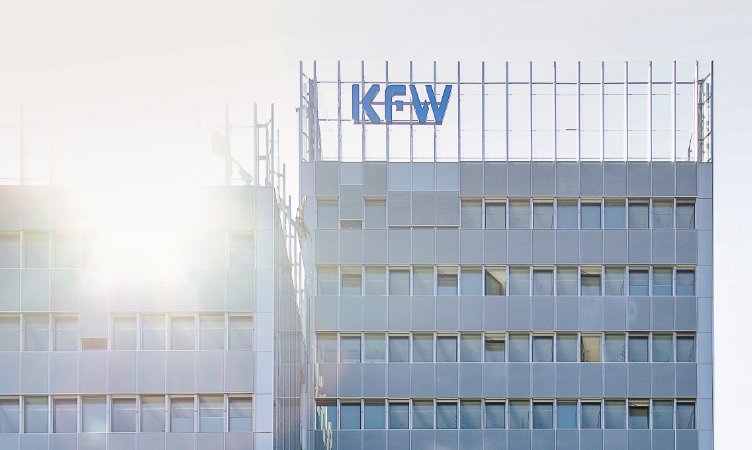Managing with sustainability ratings

An objective view from the outside provides impetus to scrutinise one’s own performance. KfW Group therefore uses sustainability ratings as an external benchmark for its strategy development – and incorporates constructive feedback into its processes.
Sustainability ratings are an effective tool for comparing a company’s own sustainability performance with that of its competitors. Our concrete goal is to be listed on average among the top 5 promotional and development banks – in the ratings of imug, ISS-oekom and Sustainalytics. We have currently achieved this goal, but it still remains ambitious because the ranking position cannot be permanently maintained with the same effort. Other banks are catching up, and the evaluation criteria of the agencies are constantly evolving, becoming more nuanced and often stricter. KfW is therefore not content to rest on its laurels but is adapting its sustainability management practices to the changing environment.
Focus on the core business
In addition to environmental management in banking operations and the products and services offered, sustainability ratings consider many other aspects in the comprehensive assessment of a company. These include employee working time models, existing organisational anti-corruption measures or corporate governance principles and business practices. These aspects relating to employee concerns and operational ecology ultimately send a strong internal and external message.
Financing business is the main factor in the sustainability ratings for promotional banks – with its impact on the market, the environment and society.
Reflecting on rating results
Three questions for Sandra Reitz, the KfW expert responsible for sustainability ratings:

Why does KfW use sustainability ratings as a tool to manage its strategy development?
Promoting sustainable development is at the core of KfW’s activities. We incorporate this commitment into our operations, making it mandatory for the entire bank and its employees. In addition to our internal analyses, external sustainability ratings also give us valuable insight. We are not necessarily interested in having the rating agencies identify new financing priorities – we have a clear idea of what issues and projects KfW wants to promote around the world. Instead, an objective look from the outside can give us an overview of possible weaknesses in how our promotional mandate has been put into practice. Eliminating these weaknesses is a high priority for us. The industry-specific ratings also give us a good overview of how other development banks deal with the issues.
KfW’s sustainability performance is very good compared with the rest of the sector. But there are still areas in need of improvement. Particular criticism has been levelled at isolated controversial project financing in the areas of human rights and indigenous peoples as well as the environment and energy. How does KfW deal with this criticism?
We take criticism of every controversial project very seriously. Our promotional mandate also requires projects to be funded in countries with sometimes weak and unstable political and social conditions. Unfortunately, in some cases – but these are absolute exceptions – projects cannot be carried out as we planned in advance. In addition to our environmental and social impact assessment, which is mandatory for all projects of KfW’s foreign divisions, these projects are analysed again and measures taken to eliminate negative impacts or to find alternative solutions on the ground. As a result, these projects are intensively monitored and closely tracked. But it is also clear that every controversial project is one too many, and we do everything we can to minimise the number.
We follow up constructive criticism from the rating agencies and look very carefully at how we can incorporate feedback in a meaningful way.
How do the sustainability ratings affect KfW’s operational business? Are there examples of concrete measures undertaken by KfW that were triggered by a rating?
Indeed, we follow up constructive criticism from the rating agencies and look very carefully at how we can incorporate feedback in a meaningful way. Of course, the ratings only indicate possible weaknesses in our processes. The way we then approach the issue is closely coordinated with our in-house colleagues in the next step.
The revision of our environmental and social impact assessment standards and procedures for all international projects in 2017 is an example of a concrete measure, the importance of which was underscored, among other things, by its high weighting in sustainability ratings. The focus was on aligning the various approaches of KfW Development Bank, DEG and IPEX at the higher level. The particular challenge was that these business sectors are subject to different conditions due to their individual business structures.


















